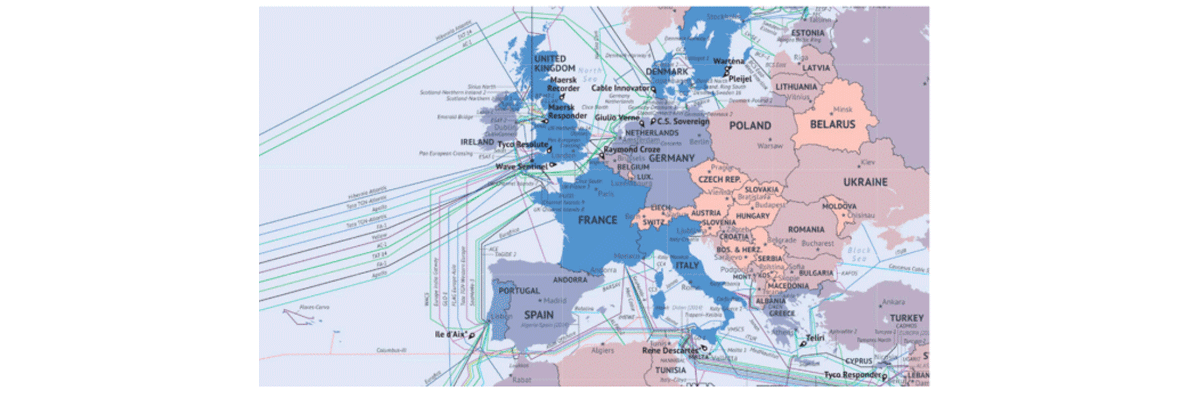EU Connectivity Study - Connecting the EU to its partners trhough submarine cables

Submarine cable systems are key elements to ensuring EU goals: remain an integral part of the connectivity ecosystem, ensure security of infrastructure and services, and establish digital sovereignty. Among the key ambitions is becoming a significant player on the data centre market.
To be and remain a significant DC market player, the EU’s own infrastructure and create legal frameworks must be strengthened to ensure security of services and minimize dependence on non-EU players. The study explains that global internet traffic is expected to grow more than sixfold in the next decade, driven, for example, by the hyperscale data centre market and M2M connections. However, significant differences between regional internet penetration have resulted in a growing digital divide. The EU plays an important role in sharing best practices and supporting policy initiatives to increase affordability of internet services and enhancing competitiveness. Initiatives to increase the affordability of internet services are also recommended.
Assessment of current resilience suggests that a significant amount of new cables should be established on certain EU routes, such as EU - Latin America and EU - Far East. The study states that some 140 cables are needed to be installed in the coming decade to keep up with increasing demand and replace retired cables. To achieve this is a financially viable way, technological advances are vital. Spatial Division Multiplexing (SDM) technology has a particular focus.
Specific measures are recommended to overcome infrastructural challenges and facilitate development of a future-proof submarine cable landscape:
- Create a common approach to submarine cable system infrastructure. The EU should define target coverage levels and monitor infrastructure gaps continuously with high emphasis on regions and routes with high retiring capacity, low resilience and ones that are financially more challenging.
- Monitor the Transatlantic region and future submarine cable investment plans to keep up the EU presence in the submarine infrastructure of this region.
- The EU should drive and support technological advancements to maintain its leading position and facilitate use of encryption in submarine cable infrastructure to mitigate security risks.
Further recommendations include:
- Ensuring a level playing field can be ensured by defining a common strategy at EU level and introducing the necessary incentives, subsidies and regulations. The level playing field should be equally accessible to owners and all other stakeholders (suppliers, surveyors, installers, customers).
- Policy actions to create a comprehensive, common EU approach towards regulation of submarine cable landing and accessibility rights. This should ensure integration into the global ecosystem, security of services and infrastructure, and maintaining the EU Digital Single Market and sovereignty.
- Increasing the security of services and infrastructure. It is recommended to classify submarine cables as critical infrastructure and define incident reporting requirements and cybersecurity guidelines.
- Developing the regulatory framework, including guidelines and other regulatory instruments is indispensable to ensure the harmonization of national regulation, fair market conditions and the security of services and infrastructure. Regulation should ensure balanced market conditions.
- Available financial resources should be aligned to the strategic priorities, by creating a comprehensive and common approach for supporting financing decisions, that includes investment in infrastructure and other financial support for EU-based companies or technological innovations.
More about the study
European Commission, Directorate-General for Communications Networks, Content and Technology, Study to monitor connectivity: executive summary, 2022.





